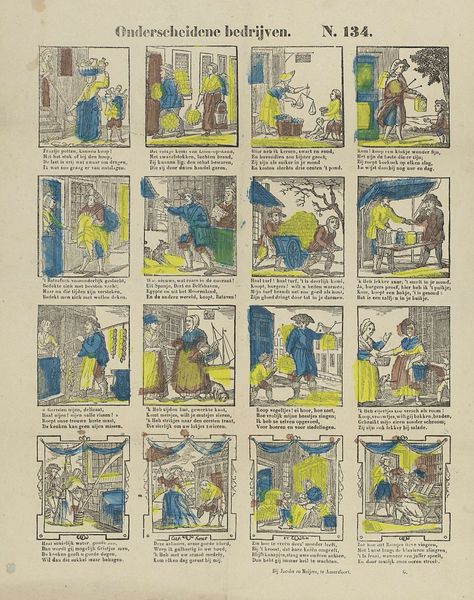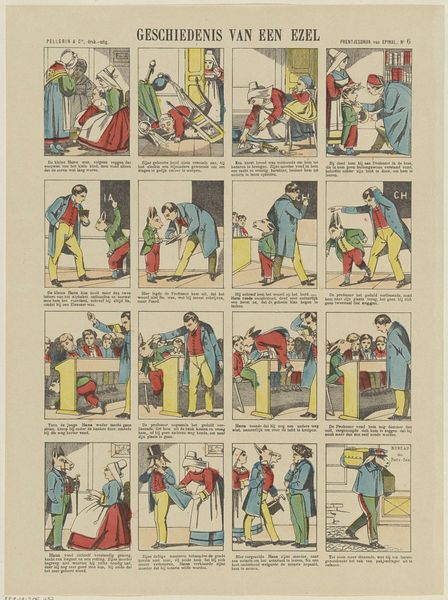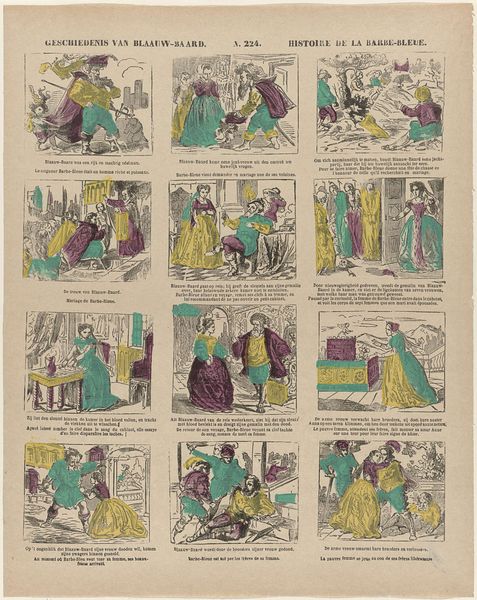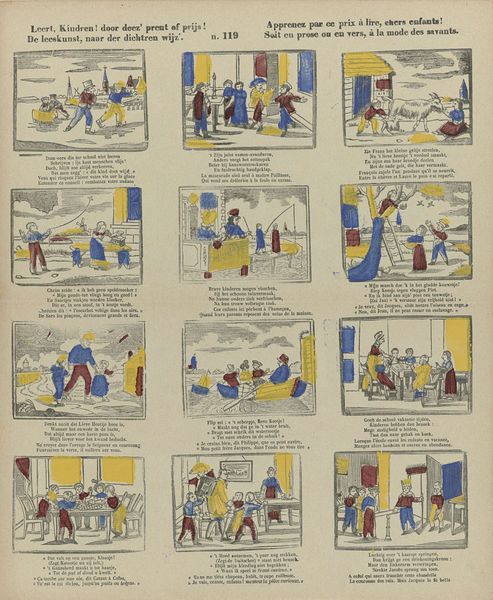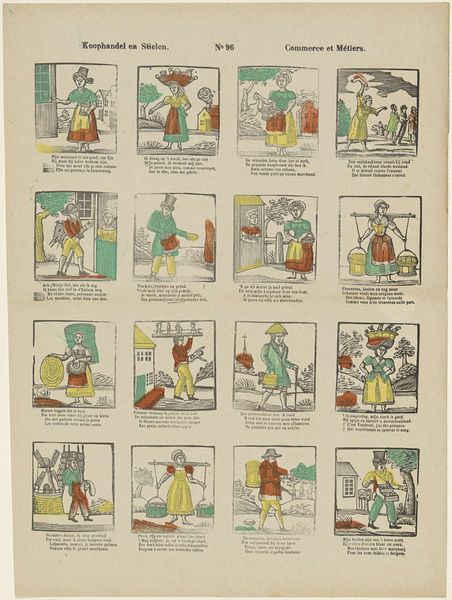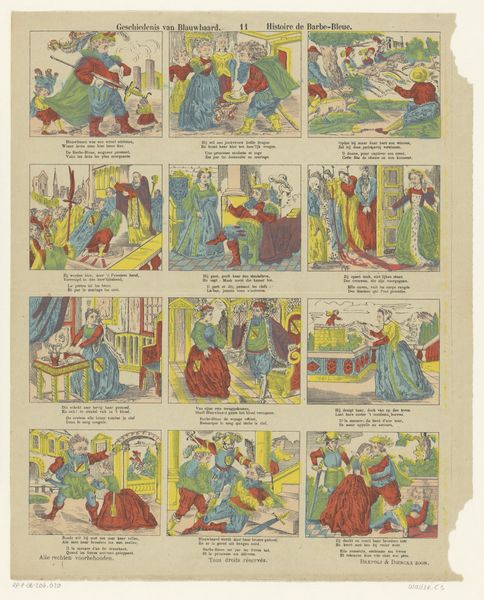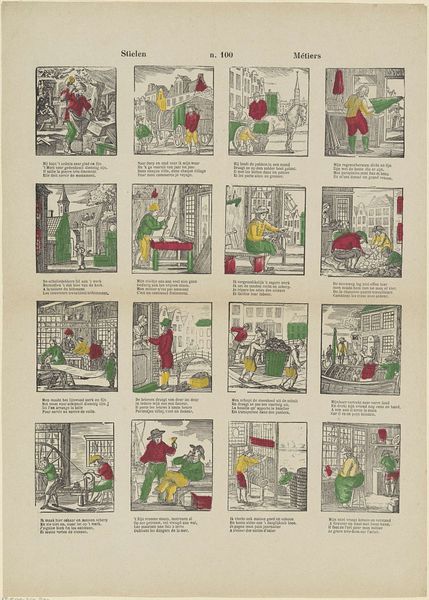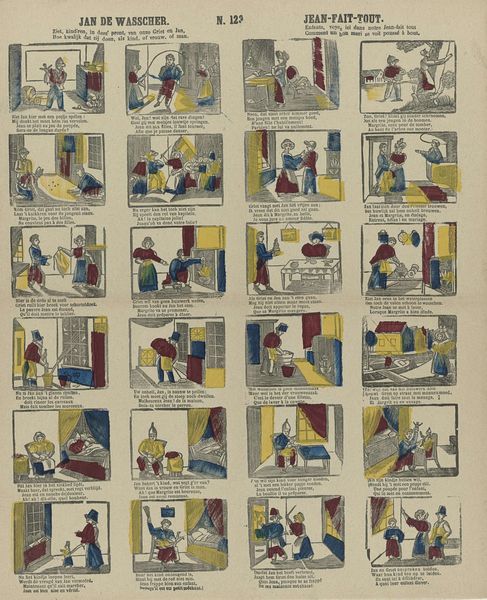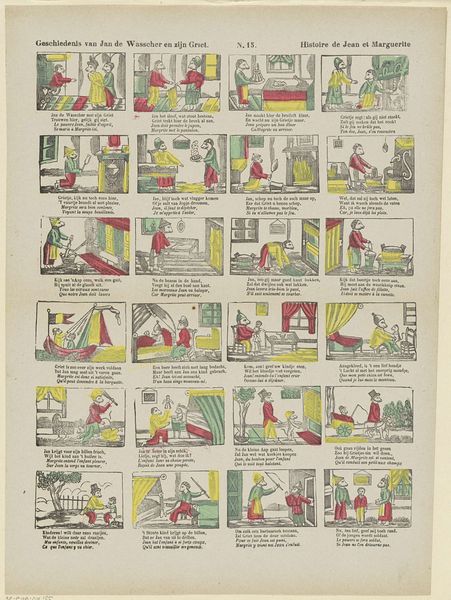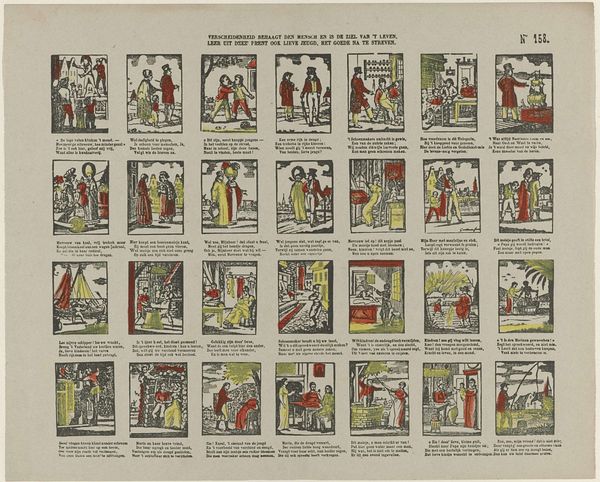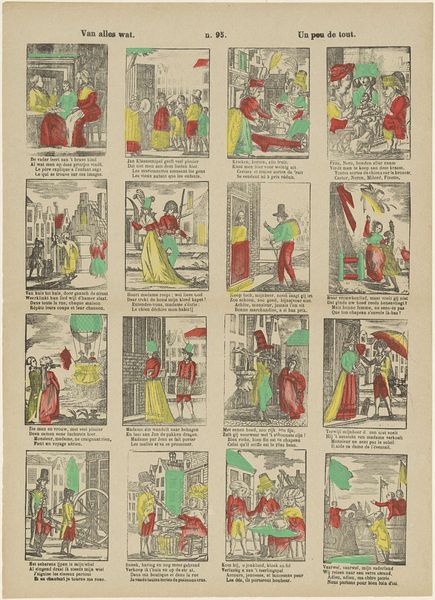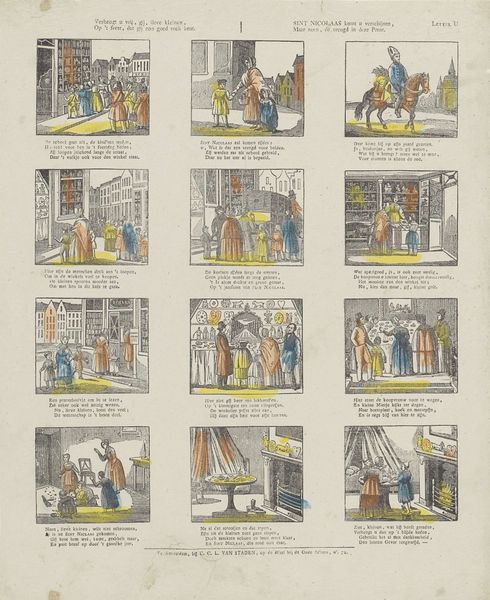
Histoire du chat botté / Geschiedenis van den gelaarsde kater 1827 - 1894
0:00
0:00
#
comic strip sketch
#
page thumbnail
#
narrative-art
#
comic strip
# print
#
personal sketchbook
#
sketchwork
#
thumbnail sketching
#
comic
#
pen work
#
sketchbook drawing
#
storyboard and sketchbook work
#
sketchbook art
Dimensions: height 377 mm, width 325 mm
Copyright: Rijks Museum: Open Domain
Curator: Here we have a printed piece entitled "Histoire du chat botté / Geschiedenis van den gelaarsde kater," dating roughly from 1827 to 1894. It’s currently held in the Rijksmuseum collection. What’s your first impression? Editor: The layout jumps out immediately! It's like a storyboard or a comic strip. The rudimentary application of color also gives it a handmade, almost folk-art feel. Curator: Precisely. Note how each panel depicts a scene from the tale of Puss in Boots. Consider the linear construction, the careful arrangement of sequential imagery. We could read this through a structuralist lens, parsing the narrative codes. Editor: But let’s also consider the means of production. This was likely mass-produced. Printmaking democratized storytelling; suddenly, these narratives were accessible beyond the elites. The paper quality, the printing process itself—that tells a story about labor and access. Curator: Fair point. However, examine the semiotic layering within each panel. The recurring motif of the cat, the king's garments – these operate as signifiers within the visual language. Consider the limited color palette. The chromatic restraint heightens the narrative clarity. Editor: I agree. However, look closely. You can practically feel the hand of the artisan applying those colors. It isn’t perfect, digitally precise. It is physical. What inks were accessible? Who was applying them and under what conditions? That is key. Curator: Of course. Though, if we isolate specific panels, we notice the formal elements recurring – diagonals to denote movement, vertical lines suggesting authority. There's a calculated construction regardless of any perceived naivete. Editor: Absolutely! I am keen to research how this artwork was printed and distributed in its era. I would even consider the original audience: How did working-class children interpret the symbolism compared to wealthier contemporaries? Curator: A fascinating point, indeed. It is tempting to think further on it, I hope visitors pause and use the print’s format and visual shorthand to meditate upon familiar stories told and retold. Editor: And I encourage others to explore the implications this artwork may possess in our understanding of social histories!
Comments
No comments
Be the first to comment and join the conversation on the ultimate creative platform.
